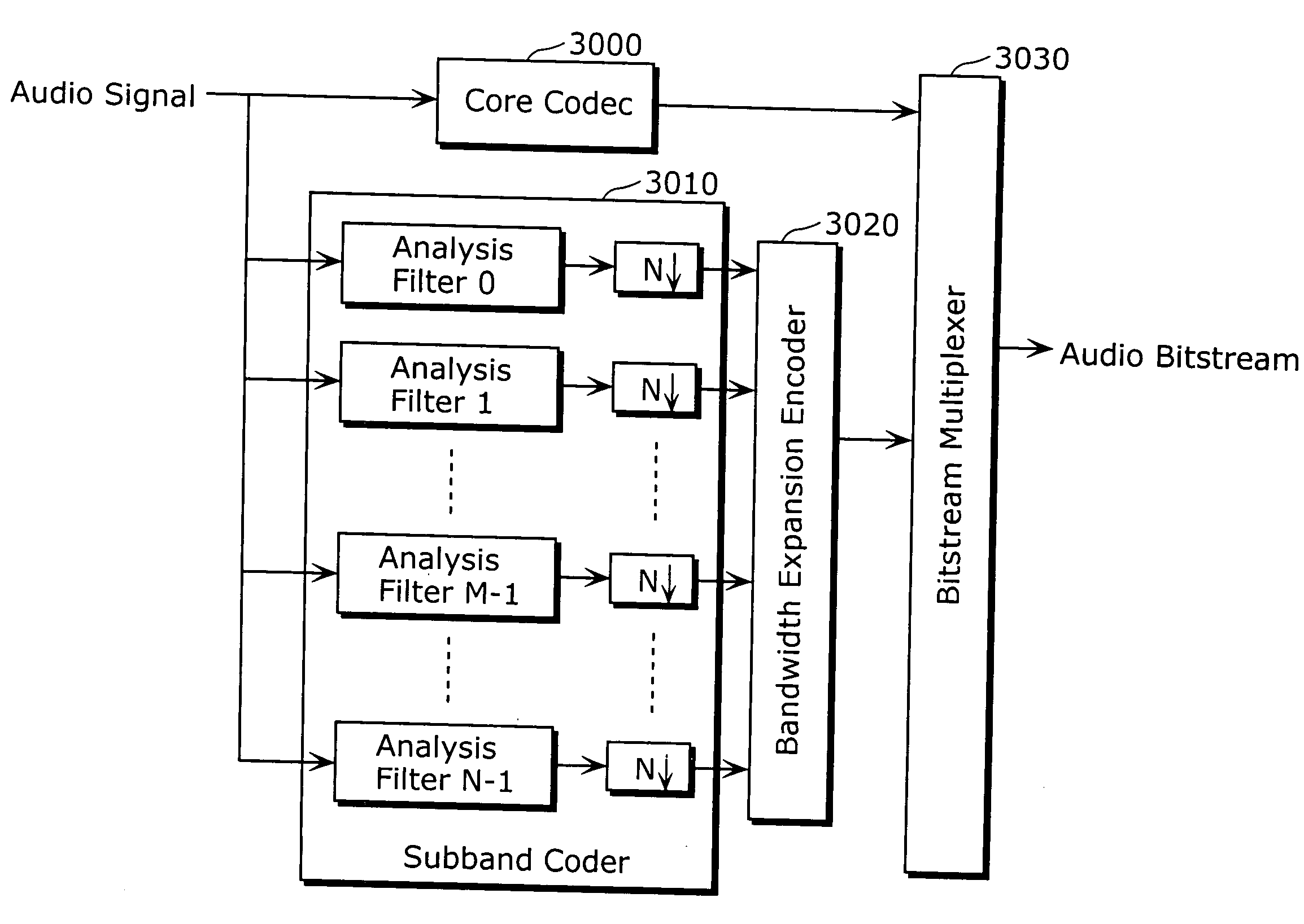Method for deciding time boundary for encoding spectrum envelope and frequency resolution
- Summary
- Abstract
- Description
- Claims
- Application Information
AI Technical Summary
Benefits of technology
Problems solved by technology
Method used
Image
Examples
Embodiment Construction
[0047] The following method is one example of the above-described SBR technology. However, many modifications are possible in the exemplary embodiment utilizing the spectral envelope coding based on the time / frequency grid.
3.5.1 Determination of Time Borders
[0048] The embodiment for the determination of time borders is presented as a series of diagrams shown in FIGS. 13 to 17.
3.5.1.1 Overview
[0049]FIG. 13 is a diagram showing an overall flowchart of a time border determination unit of the present invention. FIG. 13 shows an overview of an overall time border determination operation. 12010 sets a first border ‘border[0]’ to the end border of the previous SBR frame. It also initializes a border counter ‘noBorder’ to 1. 12020 activates a transient detector for the current frame, to check for the most drastic transient behaviour from border[0] to (next nominal SBR border+V), where V is the amount of transgression into the next SBR frame allowed by the syntax.
[0050] If a transient...
PUM
 Login to View More
Login to View More Abstract
Description
Claims
Application Information
 Login to View More
Login to View More - R&D
- Intellectual Property
- Life Sciences
- Materials
- Tech Scout
- Unparalleled Data Quality
- Higher Quality Content
- 60% Fewer Hallucinations
Browse by: Latest US Patents, China's latest patents, Technical Efficacy Thesaurus, Application Domain, Technology Topic, Popular Technical Reports.
© 2025 PatSnap. All rights reserved.Legal|Privacy policy|Modern Slavery Act Transparency Statement|Sitemap|About US| Contact US: help@patsnap.com



